 4.9
out of 5
based on 99
Patients Rating
4.9
out of 5
based on 99
Patients Rating
Hair loss has become one of the issues, which has been a cause of concern as far as appearance, personality and psychology of the person is in question. A significant portion of the population is having the problem irrespective of gender. Earlier it was known as a problem affecting strictly the male population but females are also affected in significant numbers and it causes psychological trauma more in females.
Apart from androgenic alopecia which is a common cause of baldness there are other medical causes like autoimmune disorders, endocrine or hormonal disorders, trauma or scar, traction alopecia, nutritional deficiencies, chemotherapy, radiotherapy to mention a few.
Once considered as the sign of ageing, hair loss is now occurring in many age groups across the spectrum. The involvement of younger age groups in addition to genetic predisposition can be attributed to stress, crash dieting, environmental pollution, smoking, unhealthy hair care habits.
Conservative as well as surgical options for treatment of hair loss are available depending on the stage of hair loss. In androgenic alopecia hair transplant offers a permanent solution to the problem if one is the candidate for it.
In view of the rising problem, hair transplant in Delhi has picked up a lot due to many advantages and the affordability, which the centers in Delhi provide without compromising the quality.
Hair transplant is a surgical procedure in which hair follicles from the donor area are transplanted into the recipient area. The donor area is the area which is also considered as a permanent hair bearing area as the follicles here are resistant to the effect of DHT hormone. The donor area is typically the back and the sides of the scalp area but other areas can also be used for this purpose like beard, chest, upper back etc. The recipient area is the area where the hair loss or the baldness has occurred. The dimension of this area depends on the stage of baldness. The Hair transplant can be scalp to scalp, it can be body hair to scalp transplant or it can be facial Hair transplant.
There may be certain factors which may affect the decision and planning of the procedure:
• Degree of baldness
• Medical health
• Diagnosis
• Hair characteristics like hair diameter, hair color
• Patients expectation
• Donor area
• Age of the patient
• Family history of baldness
There are two basic techniques based on the follicular unit principle. The difference in these techniques is the method of harvesting the hair follicle whereas other steps of surgery essentially remain the same.
The two commonly used techniques are follicular unit transplant (FUT) and follicular unit excision (FUE).
In FUT a calculated length of skin strip from the scalp is harvested. This strip is then prepared and dissected into vertical segments of follicular unit thickness. These units are then placed in preservative or holding solution and are placed in the recipient sites.
In FUE very small punches are used for extraction and these follicles are then removed with the help of fine delicate forceps in order to prevent any damage to the follicle.
There are many types of FUE variations available but the basic technique remains the same.
• Manual FUE where the punches are used manually by rotating around the follicle.
• Powered FUE using the micromotor and powered hand with small micro-punches.
• Vacuum apparatus along with powered FUE for extraction.
• Robotic FUE
Now a days FUE has gained much popularity due to the advantages provided like
• Since scarring is less visible, styling the hair is not an issue
• Donor site laxity and density are not a significant deterrent
• Postoperative pain and discomfort is less
• Postoperative healing time is less.
• Follicular group of specific size and diameter can be specifically targeted by the doctor.
• Extended donor areas can be targeted for harvesting the follicles if required like beard, chest, back etc.
Hair transplant in Delhi is offered by many centers which provide good services and excellent results but all the centers may not be as good as you want them to be. So, one should select the center based on their experience of consultation, research about the reviews, talking to previous patients and studying their portfolio.
After all the initial check-up and paperwork, the patient is given pre-medication. Once the hypersensitivity to drugs is checked, the patient is taken to the procedure room after changing into OT dress.
Local anesthesia: It blocks the pain and makes the area numb where it is given. It is infiltrated into the scalp or any area where one needs to do the procedure. One can use topical cream sometimes before the injections so that the prick of the injections is also not fully felt.
Making of the recipient slits: Recipient slits are the spaces made by the doctor keeping in mind the direction and angle of the natural existing hair in that region. The density of the transplanted hair also depends on this stage of the surgery. It is very important that the operating doctor has a good amount of experience in the procedure otherwise the whole procedure may become a problem.
Graft extraction: Extraction of grafts is done in a way so that quality grafts are harvested. This is the step where the experience of the doctor counts as only an expert can harvest grafts without much wastage and without transection.
Implanting the grafts: The harvested grafts are placed in the slits which were made by the doctor. The key is delicate handling of the grafts while placing it.
The actual result of the hair transplant surgery is evident in 10-12 months, depending on the patient.
The result of a hair transplant depends on many factors. So it is very important to assess each patient carefully to determine the candidacy and also to counsel the patient about the realistic expectation.
General patient factors: These factors indicate the overall health of the patient. The presence of co-morbidities like diabetes, hypertension or another chronic disease may affect the overall result. Cigarette smoking is also a risk factor for a poor outcome. Age of the patient is one of the important factors while counseling and marking the areas for transplant. There will be the difference in the hairline design of a young patient and that of a comparatively older patient. In young patients, one important factor is the anticipated further hair loss which the surgeon should keep in mind while planning hair transplant in a comparatively younger age group.
Donor Area Factors: The level of miniaturization of follicles and its effect on the donor area is one of the points that determine the availability of donor grafts and their characteristics like if the donor's hair is fine, thin or weak, then it will adversely affect the result. Other factors that contribute are the density of hair in the donor area, donor hair diameter, hair to skin colour contrast and the texture of the hair.
Factors during surgery: These are the factors where the experience of the surgical team, including the assistants, comes into play.
Hairline designing and hairline creation are some of the factors which decide the cosmetic result of the procedure. The experience and knowledge of the doctor will come into play in this part.
Graft handling: The blunt trauma to the bulb area, transection of the grafts and dehydration of the grafts are common types of injury that may take place during harvesting and handling of the grafts. These can result in poor graft survival and hence the poor result.
Recovery time after FUE hair transplant is comparatively faster as compared to FUT.
After the surgery, antibiotics and analgesics may be prescribed to prevent any infection and to make the patient comfortable from any discomfort. One may experience some swelling on the forehead 2-3 days after the procedure, which may take 4-5 days to subside. So. It is better to take a few days off from the office if swelling occurs.
Some patients may have mild itching during the healing period, which is generally not problematic, but if it is bothersome, then you should contact your doctor. Your doctor may prescribe some antihistamines. These medications should only be taken after consulting your treating doctor. There may be some redness and discolouration on the recipient area, which generally fades over a period of time.
There may be a period of temporary shedding which starts 3-4 weeks after the surgery and may continue for 10-12 weeks. This shedding may be complete, or it may be there in some areas. Generally, after the shedding, transplanted follicles start to grow.
There are many reasons why patients from all around the country prefer to come to Hair & Senses clinic, a leading hair transplant clinic in Delhi for hair transplant and hair loss treatment. Some of the reasons include:
Experienced Doctor: At Hair & Senses the doctor has experience of a good number of years and is experienced in all techniques of hair transplant.
Experienced team: The team at our center is well experienced and co-ordinate making the procedure smooth. This reflects in the good experience that our patients feel.
Low transection rate: As the grafts are mainly extracted by the doctor and with her methods and protocols the yield of the grafts are high and transection rate is well below 5%.
Natural results: Our Doctor follows all the aesthetic principles so that the patients get natural looking results that are almost unnoticeable.
Disinfection and sterilization protocols: We at our center believe in clean and hygienic procedures so that there is negligible chance of infection. At our clinic we follow all the sterilization protocols. All instruments are sterilized. All the linen and sheets used are disposable. In covid times air filtration and air exchanges mechanism is used in the procedure room. So that the procedure room is infection free.
Comfortable and essentially pain free experience: With our pre-medication and anesthesia protocols our patients sail through the procedure smoothly without any discomfort. This is because our doctor continuously strives to provide excellent results and a comfortable experience.
Graft counting: We believe in providing genuine and honest graft count by providing the number of grafts which are counted while extraction and also while inserting them in recipient sites. So, the desired results are obtained with cost-effectiveness as we work on a graft basis.
Stage of baldness - This in other words whether the frontal area is to be addressed or crown area is to be done. Crown transplantation is technically more demanding as in crown the directions of hair are different and in a whorl like pattern which is to be created in a way that it looks absolutely natural.
Number of grafts or hair follicles to be transplanted - This also correlates with the stage of hair loss. Many centers charge per graft and many others charge per hair. So, one needs to be very clear about what they are getting in the price offered. Working on per hair charge is obviously costlier than working on per graft.
Type of hair transplant - The cost also differs depending on the type of procedure as more staff and time may be required in FUT as it requires dissecting and cutting of the strip into individual follicles. On the other hand, FUE requires more precision and experience as harvesting is done with the micro-punches using powered devices.
Total number of sessions required - Whether the procedure is single stage or it is a two or three stage procedure after some time intervals also is a factor in determining the cost of the procedure.
Advanced procedure- Procedures like body to scalp or facial hair transplant requires a lot of experience and skill. These procedures should be done by an experienced doctor supported by an equally experienced team.
Primary surgery or a revision procedure- A revision surgery requires more skill, time, knowledge and experience. Corrective procedures need a lot of knowledge and skill and it is very important to decide on the strategy to revise the procedure in a setting with a limited number of grafts available. This is also a contributory factor in deciding the cost of the procedure.
Everybody considering having a hair transplant has this very simple question on their minds. The common belief is that because hair transplantation is a medical process, a noticeable scar may result, making it unattractive if I maintain my hair short.
The experience of the surgeon and the hair transplant technique affect how visible scarring is.
The donor area may have a few tiny dots of scarring from the FUE technique, but these scars will disappear within a few days of the procedure and won't be noticeable.
One may detect a linear scar from where the strip was extracted during FUT, which involves strip extraction from the donor location. In this case, the surgeon's ability is what counts. Our center carefully closes wounds utilizing trichophytic closure procedures such that hairs grow between the scar, and the final minimum scar is scarcely noticeable. For more details, visit the top Hair transplant clinic in Delhi, Hairnsenses.
A hair transplant is a lengthy procedure that requires time and may produce little results. During this time, patience must be practiced. The transplanted hair's shaft begins to shed after three to four weeks. The development of transplanted hair follicles often starts in the third month. After the surgery, there is a noticeable change in hair growth after 5 to 6 months, and the whole hair growth with the final outcome is visible 10 to 12 months afterward. Contact the professionals at Hairnsenses, the Best hair transplant in Delhi, for more information.
Yes, if the patient has no conditions that could cause hair loss and the transplant is performed on a healthy scalp, the hair placed in the patient is permanent.
The permanent nature of the implanted hair is the crucial aspect. Understanding the characteristics of the donor area, which is ideally the scalp area in the back and sides, is vital. The hair follicles in this region are resistant to the effects of DHT, the hormone primarily responsible for hair loss, making it the preferred donor area.
When transplanted from this secure area to the bald spot, the hair follicles also retain their DHT resistance trait. The term "Donor Dominance" describes this. Because of this, the transplanted hair typically resists baldness.
One would assume that they will require frequent clinic visits for routine check-ups because it takes so long to get the results. Although it is a drawn-out process, only one or two trips are often required following surgery.
At our facility, we advise patients to come in the day after surgery to have their bandages removed. In the same visit, we perform the patient's initial head wash and demonstrate how to do it for 10 to 12 days. Our usual advice is that if a patient can visit the clinic, they should do so after 10–12 days so that the doctor or one of the team members can remove the scab and crust. Once more, all instructions are given.
The patient is recommended to stay in touch with the clinic and call the doctor by phone or come in whenever they feel like it or have any problems.
Contact the professionals at Hairnsenses, the Best hair transplant in Delhi, for more information.
Modern hair transplant treatments make obtaining a natural-looking, permanent result possible. Hair transplant surgery has advanced over time. Success depends on the surgeon's training, the appropriate choice of the surgical candidate, the patient's health, and compliance with pre- and postoperative instructions.
Therefore, hair transplants are typically successful if a procedure is carried out on a good candidate with no medical issue that may impair hair growth and surgery is carried out by an experienced surgeon.
When performed correctly on patients who are good surgical candidates, hair transplantation produces the desired outcome. But it's important to know and understand that not all people who experience hair loss are ideal candidates or meet the requirements for a hair transplant.
There may be a few reasons why a patient is not a candidate for a hair transplant, such as when the thinning hair first appears or when the hair loss is so advanced that there may not be any donor hair available. Early on, a hair transplant may not be necessary; finasteride tablets or minoxidil lotion may be sufficient. If body-to-scalp hair transplantation is an option in the late stages when there is no donor, it may be advised instead of using a hairpiece or SMP.
This cutting-edge surgical procedure lowers the hairline, or to put it another way narrows the forehead. It is also known as forehead reduction surgery for this reason. Female patients with high hairlines and steady hair loss — or those without a history of increasing hair loss—typically undergo the procedure. To assess whether a patient is a candidate for the hairline lowering operation, one should look at the direction of the patient's hair, hairline recession, and scalp laxity during the pre-surgery consultation.
A scalp flap advancement procedure and a hair transplant are options.
If the amount of scalp laxity is minimal or the advancement is excellent, a two-stage surgery using tissue expansions may be necessary.
A cheap hair transplant not only entails a lower cost for the treatment but also lower-than-expected results in terms of quality. The infrastructure and the doctor's and the team's experience account for most of the expense. Less experience could result in unfavorable outcomes in density, hair direction, and overharvesting of grafts from the donor location. Overharvesting or extracting more in one place could give the donor area a poor reputation.
This inexperience destroys the graft availability for any upcoming procedures. If any adjustments to the surgery are needed, that becomes challenging because there aren't enough grafts available because of the team's inexperience.
Even for quick procedures, consulting with a doctor is always a good idea before any procedure. One should always go in person for a consultation when considering a hair transplant because it involves improving the appearance of the face. It is advantageous in many ways because the doctor can physically check the patient, particularly their scalp, and because a thorough medical history may be obtained. Patients can ask questions about the various elements of the surgery.
The doctor can also be questioned about earlier cases. If there are any dos and don'ts concerning the specific matter, they can be discussed beforehand. To help the patient have realistic expectations, the hairline and the area to be transplanted might be demarcated and drawn on.
Blood tests are performed before hair transplantation for two specific reasons. It should go without saying that blood tests are necessary before any operation to assess the patient's general health and determine whether their clotting and bleeding patterns are standard. These include blood tests for the CBC, prothrombin and activated partial thromboplastin time, blood sugar, viral indicators, and an ECG should be performed in hypertensive individuals.
Serum iron/ferritin profiles, thyroid profiles, hormone tests, and blood tests that may be needed for autoimmune illnesses are among the second group of blood tests to look into the cause of hair loss.
It is a very common question that may arise in the mind of any person who is going for the procedure. The treatment options depend on the underlying cause of the problem, stage of hair loss. Surgical treatment is recommended if the patient is a suitable candidate for hair transplant. In early hair loss where there is only thinning one should avoid transplant. In these patients it is always good to address the problem conservatively with the help of medicines and if required one can go for PRP injections. In cases where baldness is of a very advanced stage that means where no donor is available, hair transplant is not advisable. Results of hair transplant are really fruitful if the experienced doctor and the team do the procedure.
Identifying and treating the underlying cause is the mainstay of the management of any disease. We at Hair & Senses follow a stepwise comprehensive approach based on detailed history and examination to reach the cause of the problem and provide appropriate solutions, which is evident by our results and more so by the smile on the faces of hundreds of our patients. Hair & Senses is one of the leading and fastest growing hair transplant clinics providing services of hair transplant across the spectrum like Scalp to scalp, body to scalp, facial hair transplant and other advanced techniques. It is known for quality treatment and best possible results without undue expensiveness. The clinic has successfully treated thousands of patients from all over the globe.
As we understand that in addition to providing treatment of international standards, one of the concerns has been the cost effectiveness. With the thought of providing an appropriate solution of the problem at affordable cost without undue expense, Hair & Senses, a clinic for hair transplant in Delhi was started and has been providing its services to people.
Hair Transplant in Delhi is not going to cut your pockets if you are at Hair & Senses. We provide you cost effective treatment options and comfort of discussing the case properly with the expert (consultation session) at free of cost before the procedure. Hair & Senses is the best hair transplant clinic in Delhi, NCR having great experience of delivering better & assured results. Hair Transplant Surgery is done by experienced technicians & specialists here.
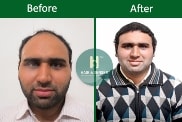
The procedure for hair transplantation that involves transplanting individual hair follicles from donor site to bald area known as the 'recipient site'. The donor area commonly used is back of scalp as these follicles are resistant to the effect of DHT, other areas from where follicles can be harvested are beard, upper chest, upper back, forearm, armpit, legs.
View Details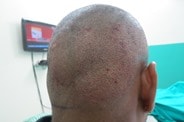
FUE Hair Transplant is a process in which hair follicles from the donor area (generally from the back and side of the scalp) is extracted and is placed on the balding area of the scalp (frontal, mid frontal and the crown) of the patient itself.
View DetailsFUHT Hair Transplant: Follicular Unit Transplantation (FUT) is a procedure where hair follicle is transplanted from the permanent hair bearing zone at the back and sides of the scalp to the bald areas of the scalp.
View Details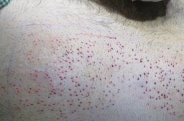
This term essentially means using the hairs from the parts of body other than the scalp and transplanting them on the scalp/head. Hairs most commonly are taken from beard followed by upper chest, upper back, abdomen, armpits, forearm, legs.
View Details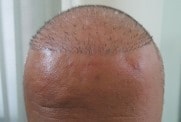
Hair transplant, if not performed with surgical precision can go horribly wrong. It can leave lasting impact on the person’s quality of life. The reason that some hair tranplant surgeries go wrong is the use of outdated methods like plug-procedures, mini-grafts or scalp reductions.
View DetailsHair loss is more commonly seen on the scalp. It becomes more evident when it occurs on the face as it becomes more visible. This may be patchy hair loss to near total hair loss Facial hairs i.e. beard and moustache are often seen as mark of manliness so the facial hair loss may result in low self esteem.
View Details
A 24 year old patient with Norwood Grade 2 male pattern baldness. A total of 1500 grafts extracted and transplanted by FUE technique.
View DetailsA 26 year old patient with Norwood Grade 3 male pattern baldness. A total of 2500 grafts extracted and transplanted by FUE technique.
View Details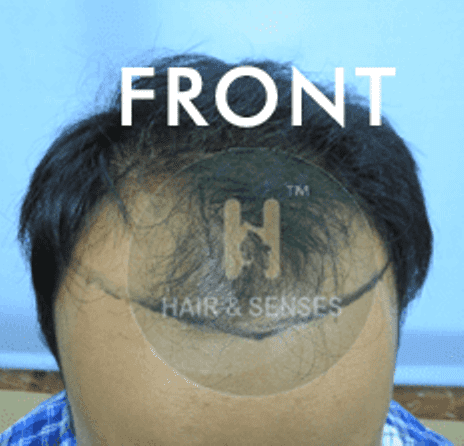
A 26 year old patient with Norwood Grade 3 hair loss came to us for consultation.
View Details